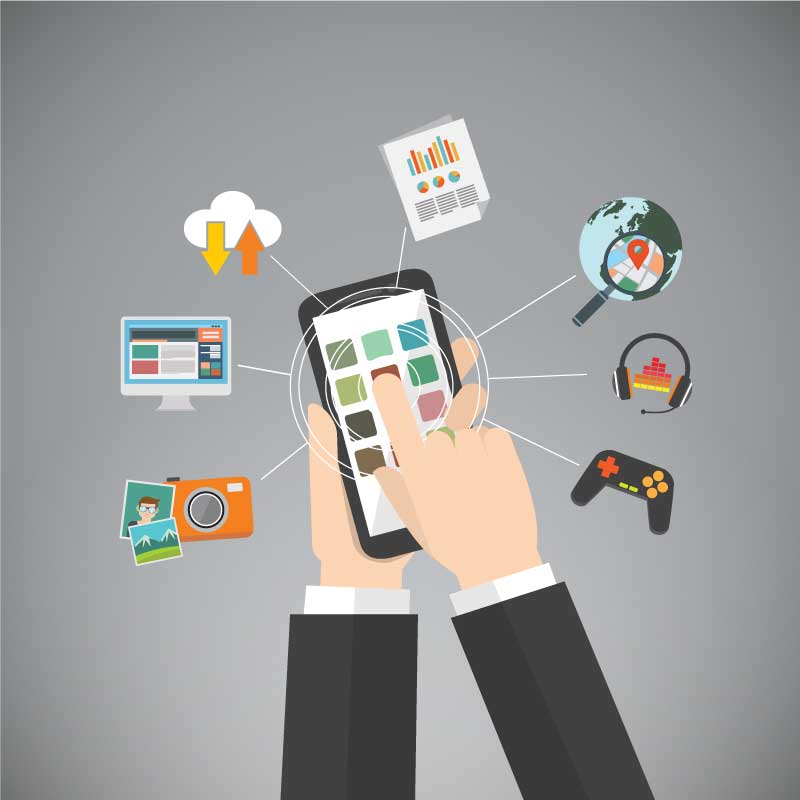In today’s digital age, connected gadgets have become an integral part of our lives. From smartphones and tablets to smart home appliances and wearable devices, these technologies offer a wide range of convenience and connectivity benefits. However, the proliferation of connected gadgets also raises important environmental concerns.
Introduction to Connected Gadgets

Connected gadgets, also known as Internet of Things (IoT) devices, are everyday objects that are embedded with sensors, software, and other technologies to connect and exchange data with other devices or systems over the internet. These gadgets can range from simple household items like light bulbs and thermostats to more complex devices like smart refrigerators and security cameras.
The rise of connected gadgets has been driven by advancements in technology, such as the development of low-cost sensors, wireless communication protocols, and cloud computing. These innovations have made it easier and more affordable for manufacturers to create smart, interconnected devices that enhance our daily lives.
Environmental Concerns of Connected Gadgets
The production, use, and disposal of connected gadgets have significant environmental impacts that need to be addressed. Some of the key concerns include:
- Resource Consumption: The manufacturing of connected gadgets requires vast amounts of raw materials, including metals, plastics, and rare earth elements. These resources are often extracted through environmentally destructive processes such as mining and deforestation.
- Energy Consumption: Connected gadgets consume electricity both during use and when they are plugged into power sources or charging devices. This energy demand contributes to greenhouse gas emissions and the depletion of non-renewable energy resources.
- E-Waste: When connected gadgets reach the end of their lifespan, they become electronic waste (e-waste). E-waste contains hazardous materials that can pollute the environment and leach into waterways if not disposed of properly.
Resource Consumption
The production of connected gadgets involves the extraction and processing of a wide range of raw materials. For example, smartphones and tablets contain metals such as gold, silver, copper, and aluminum, as well as plastics and glass. The mining of these metals often leads to habitat destruction, soil and water contamination, and other environmental impacts.
To put this into perspective, here is a table showing the estimated resource consumption for the production of popular connected gadgets:
| Device | Metals (kg) | Plastics (kg) | Rare Earth Elements (g) |
|---|---|---|---|
| Smartphone | 16 | 7 | 0.5 |
| Tablet | 20 | 10 | 1 |
| Smart Speaker | 2 | 1 | 0.1 |
| Smart Thermostat | 1 | 0.5 | 0.05 |
As you can see, even small devices like smart thermostats require significant amounts of resources to manufacture. This highlights the importance of considering the environmental impact of connected gadgets throughout their lifecycle.
Energy Consumption
Connected gadgets contribute to energy consumption in multiple ways. First, these devices consume electricity during their operation, whether it’s a smartphone streaming videos or a smart thermostat regulating home temperatures. Second, many connected gadgets need to be charged regularly, adding to their energy footprint.
To reduce the energy consumption of connected gadgets, manufacturers can design devices with energy-efficient components, optimize software to minimize power usage, and promote user behaviors that conserve energy. Consumers can also play a role by choosing energy-efficient devices, using power-saving settings, and unplugging gadgets when not in use.
E-Waste
The disposal of connected gadgets poses a significant environmental challenge due to the generation of e-waste. Electronic devices contain toxic substances like lead, mercury, and brominated flame retardants that can harm human health and the environment if not managed properly.
Proper e-waste management involves recycling or refurbishing old gadgets to recover valuable materials and reduce the need for new resource extraction. Many countries have implemented e-waste recycling programs to ensure that electronic devices are disposed of responsibly.
Sustainability Challenges in the Tech Industry
The tech industry faces several sustainability challenges related to the production and use of connected gadgets. Some of the key issues include:
- Short Product Lifecycles: The rapid pace of technological innovation often leads to short product lifecycles, encouraging consumers to upgrade to newer gadgets frequently. This trend results in higher resource consumption and e-waste generation.
- Complex Supply Chains: The global supply chains of tech companies involve multiple stakeholders, making it challenging to trace the origin of raw materials and ensure ethical sourcing practices. Issues like child labor, conflict minerals, and environmental degradation can arise in the supply chain.
- Data Privacy and Security: Connected gadgets collect and transmit vast amounts of data, raising concerns about privacy and security. Unauthorized access to personal information or data breaches can have serious consequences for individuals and organizations.
To address these sustainability challenges, the tech industry must adopt sustainable practices throughout the product lifecycle. This includes designing products for longevity and repairability, using recycled and responsibly sourced materials, and implementing robust data protection measures.
In conclusion, the environmental impact of connected gadgets is a pressing issue that requires collective action from manufacturers, consumers, and policymakers. By understanding the resource consumption, energy usage, and e-waste generation associated with these devices, we can work towards creating a more sustainable future for the tech industry. Through innovation, collaboration, and responsible consumption, we can mitigate the environmental concerns of connected gadgets and build a more environmentally friendly digital ecosystem.


